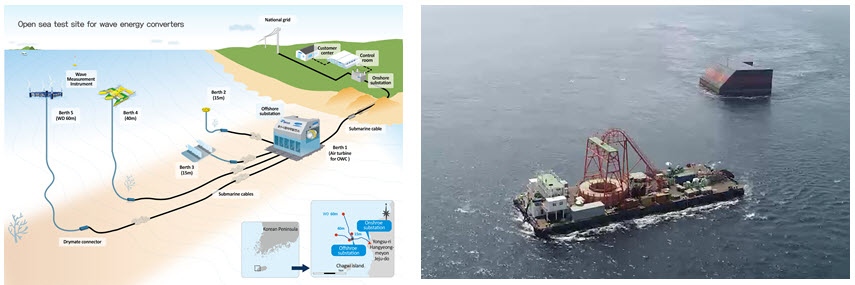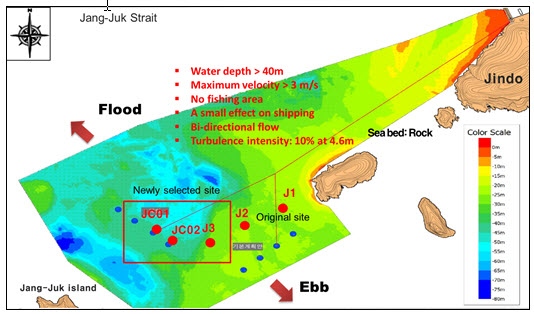REPUBLIC OF KOREA
RESEARCH & DEVELOPMENT
MOF has been supporting two construction projects of the open sea test sites for WECs and TECs. The construction project for WECs started in May 2016 and will be finished in December 2019. The western waters of Jeju Island were selected as the test site, and the existing Yongsoo OWC-tyep WEC is utilized as the first berth for OWC-type WECs and also as the offshore substation for the open sea test site. KRISO has been in charge of developing the project and the total budget is about USD17.3 million. Four more berths, two in shallow water in 15 m water depth and two in deep water in 40-60 m water depth, have been connected to the offshore substation and the grid system with the total capacity of 5 MW. The offshore cables were installed in 2018. The floating pendulum wave energy converter (FPWEC), with the capacity of 300 KW, was connected to the fourth berth with 40 m water depth in 2018. The fifth berth with 60 m water depth is expected to be used for floating offshore wind turbines as well.
 Open sea test site for wave energy converters (left). Installation of offshore cables nearby the existing OWC WEC (right). Open sea test site for wave energy converters (left). Installation of offshore cables nearby the existing OWC WEC (right). |
 Possible two arrangements for 4 Test berths Possible two arrangements for 4 Test berths |



